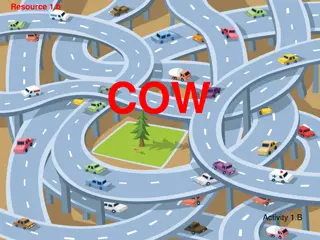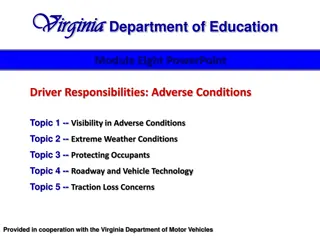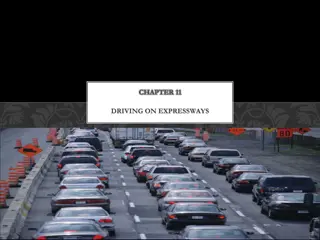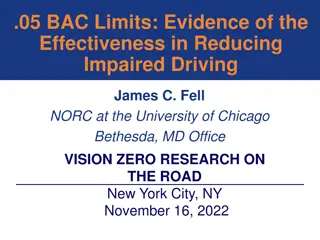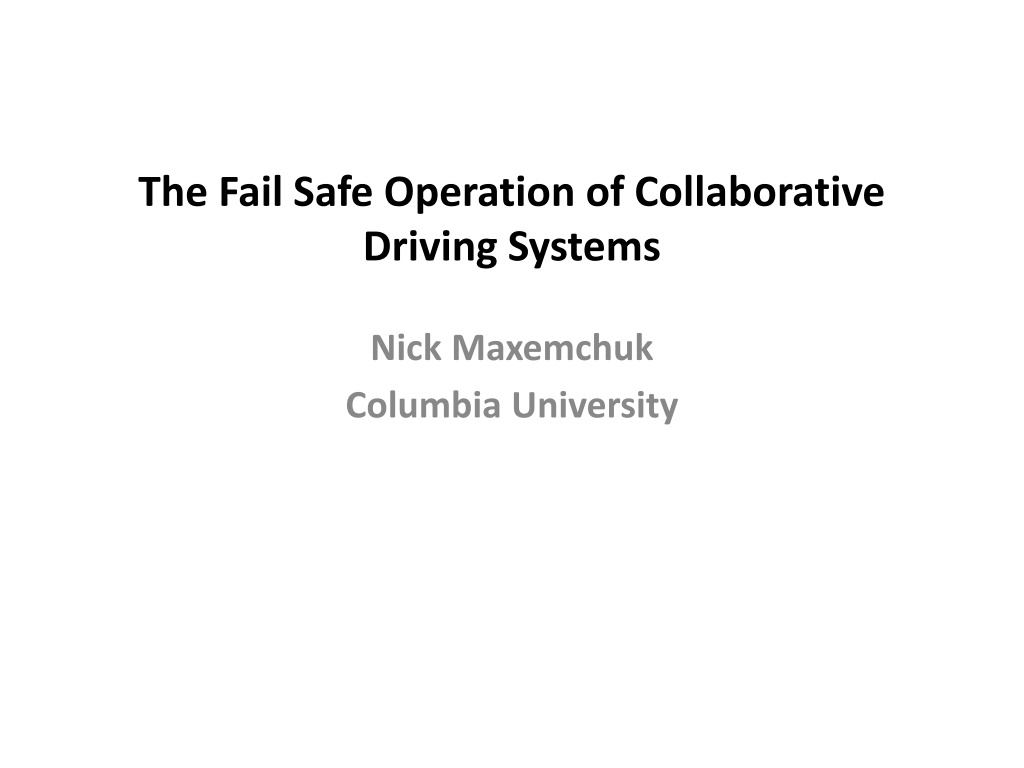
Secrets to Fail-Safe Operation in Collaborative Driving Systems
Explore the complexities of protocols for automotive applications compared to communications, focusing on multiple hardware platforms, real-time constraints, and the need for architectures to ensure fail-safe operation in collaborative driving systems.
Download Presentation

Please find below an Image/Link to download the presentation.
The content on the website is provided AS IS for your information and personal use only. It may not be sold, licensed, or shared on other websites without obtaining consent from the author. Download presentation by click this link. If you encounter any issues during the download, it is possible that the publisher has removed the file from their server.
E N D
Presentation Transcript
The Fail Safe Operation of Collaborative Driving Systems Nick Maxemchuk Columbia University
Why protocols for Automotive Applications are more difficult than those in Communications Complexity: Multiple Hardware Platforms communications, sensors, the vehicle, other automated systems Architectures break big problems into manageable pieces Multiple hardware platforms is a good reason to move to architectures that are more complicated than the layered (single stack) architecture that is used in communications Multiple Real Time Constraints: Timed Automata versus Finite State Machines If it hurts don t do it GPS and crystal oscillators make synchronous operation of vehicles reasonable replace independent timers in each car with deadlines that occur at a specific time
Secrets to Fail Safe Operation 1) Synchronous Operation of Collaborating Vehicles Rather than a large number of independent timers Eliminates Ambiguities caused by Inaccurate timers with different starting points 2) Common Information Sets Unify sensor readings Guarantee that all participants have the same set of messages Programs in different vehicles reach the same decisions 3) Architecture Base on Multiple Hardware Platforms Analogous to programming with subroutines instead of duplicating code Partition the problem to simplify the components

















